Last year we secured grant funding from North Carrick Community Benefit Fund, D’Oyly Carte Charitable Fund, Girvan Salmon Fishery Board, a landowner and the Patagonia World Trout Initiative to continue our work stabilising eroding sections of river banks in an effort to reduce the amounts of silt and sediment entering the watercourses.
Willow weaving is a simple process that provides a multitude of benefits. Weaving protects bankings from high flows, allows sediment deposition behind the woven structure and willow will grow into the bank to provide a living structure that becomes a part of the banking for years to come. The growth from the willows provides fantastic habitat for fish, which will seek sanctuary in the trailing foliage.
Tree planting and willow weaving both help stabilise vulnerable banks, reducing diffuse pollution (sediment entering the watercourse from the surrounding land and eroding banks). Diffuse pollution is one of the main contributors to decreases in water quality. Atlantic salmon, sea trout and brown trout require good water quality for spawning and gravel beds that are clean, loose and well oxygenated. Sediment from eroding banks can reduce water quality and choke spawning gravels, reducing the ability of fish to spawn successfully.
To maximise the benefits this project can provide we are looking for volunteers to help us collect and install willow spilling and brash bundles. If you are interested in helping with this project please get in touch with Struan Candlish at struan@ayrshireriverstrust.org or phone the office on 01292 737300.
This project is a fantastic way of helping to improve the habitat available to fish and invertebrates as well creating more stable, erosion resilient bankings. See the pictures below to get an idea of the type of work we will be doing over the coming weeks.
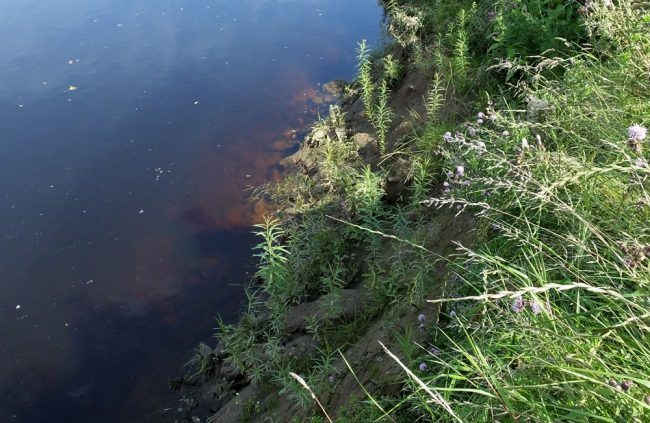
Gary Anderson spent the morning plugging willow cuttings into the eroded bankside: these are the results four months after being planted as 6″ cuttings, these should really start to offer protection and habitat in the next couple of years.
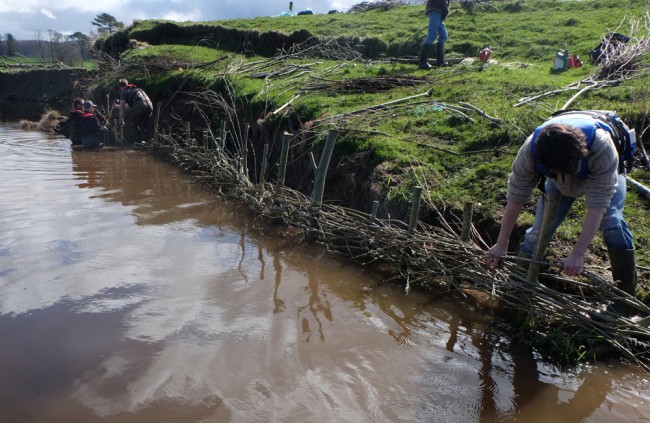
It doesn’t take too long with especially when there’s a few willing bodies to lend a hand. The more volunteers there are to help with this work the more work we can provide.
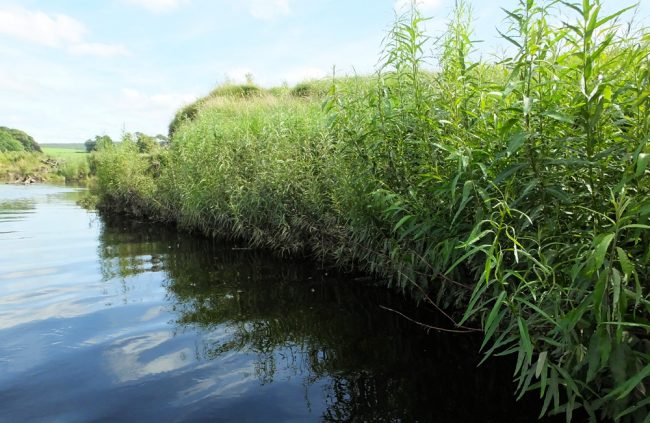
This willow spilling took longer to install than the bundles however they appear to offer a more dense and perhaps a stronger solution.
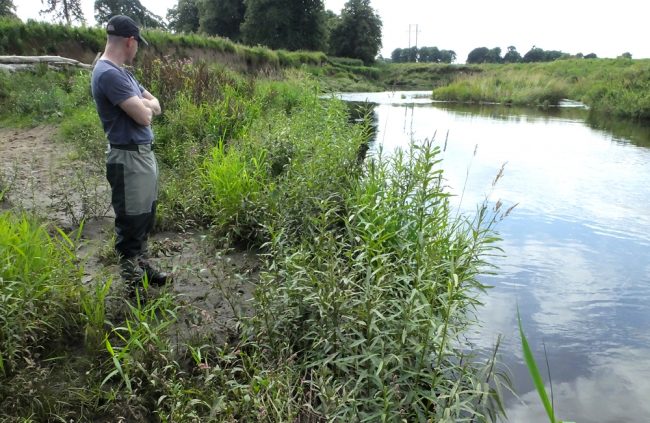
Willow bundles staked into the river bank have rooted and shoots will offer protection to the eroding bank behind during high water.
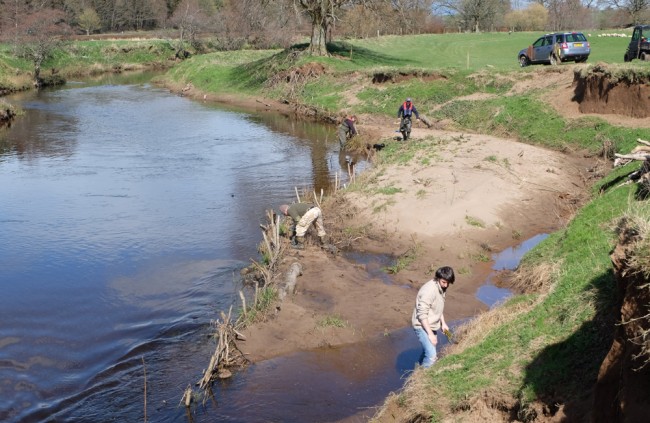
April 2016: using faggots was quicker but used far more material. However when you compare this photo the one below it is clear that this technique works well and is helping trap a lot of sediment.
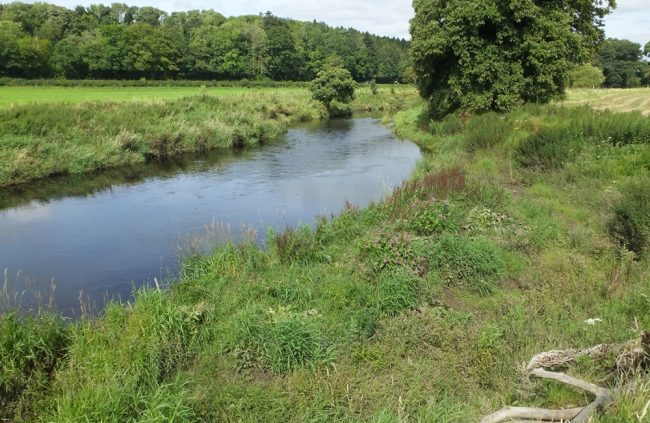
August 2016: the contrast between the earlier photo above and this photo couldn’t be more stark.
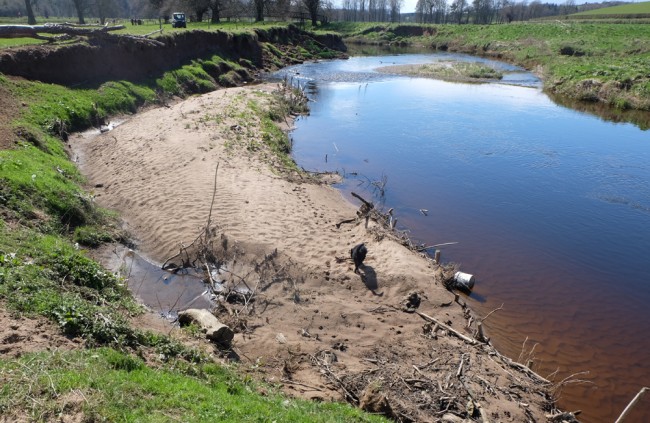
Previous efforts to stabilise this massive area of erosion have worked but being made of hazel rather than willow, they won’t last so we added to this day. By adding willow, we aim to encourage a living reinforced bank that will cut erosion and off the other benefit mentioned above.

